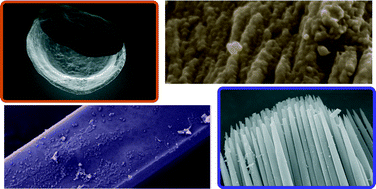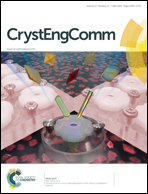A perspective on underlying crystal growth mechanisms in biomineralization: solution mediated growth versus nanosphere particle accretion
Abstract
Many organisms form crystals from transient amorphous precursor phases. In cases where the precursor phases were imaged, they were seen to consist of nanosphere particles. Interestingly, some mature biogenic crystals also have a nanosphere particle morphology, but some are characterized by crystallographic faces that are smooth at the nanometer level. There are also biogenic crystals that have both crystallographic faces and nanosphere particle morphology. This highlight presents a working hypothesis, stating that some biomineralization processes involve growth by nanosphere particle accretion, where amorphous nanoparticles are incorporated as such into growing crystals and their morphology is preserved upon crystallization. This process produces biogenic crystals with a nanosphere particle morphology. Other biomineralization processes proceed by ion-by-ion growth, and some cases of biological crystal growth involve both processes. We also identify several biomineralization processes which do not seem to fit this working hypothesis. It is our hope that this highlight will inspire studies that will shed more light on the underlying crystallization mechanisms in biology.

- This article is part of the themed collection: A celebration of 25 volumes of CrystEngComm

 Please wait while we load your content...
Please wait while we load your content...